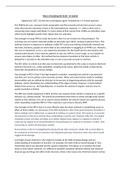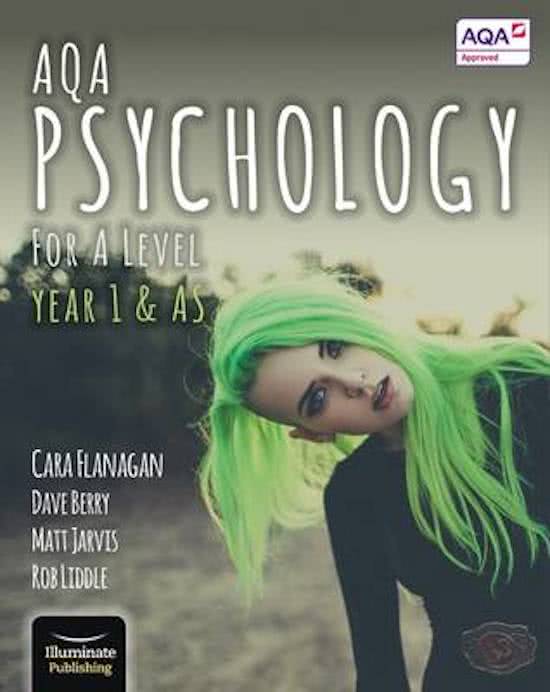Ways of studying the brain- 16 marker
Appeared as 2021 16 mark but could appear again. Potential for a 4–8-mark question.
The FMRI brain scan, measures brain oxygenation and flow towards certain brain areas to assess
when they become activated, known as the haemodynamic response. I.e., when a brain area is
consuming more oxygen and blood, it is more active at that current time. FMRIs use activation maps
which clearly highlight specific brain regions that are activated.
One strength of using FMRI to study the brain is that it is non-invasive for the participant. The
scanning uses no invasive materials (unlike an electrode cap in EEG), causing no physical harm. This
method contains no exposure to radiation (unlike PET scans) and nothing is physically inserted into
the brain, therefore, people are more likely to be comfortable in engaging in an FMRI scan. However,
this scan is impractical, as it is a very expensive procedure for the health service and requires well
trained professionals. It also requires patients to stay very still for a clear image, so not suitable for
anyone who shakes. Further, this method has low temporal resolution in that brain activity is
delayed by 5 seconds on the activation map, so not an accurate account in real time.
The EEG refers to a brain scan that uses an electrode cap attached to the scalp, to measure electrical
activity in the brain e.g., action potentials, including brain waves. Electrical activity is detected by
electrodes and graphed to assess changes.
One strength of EEG is that it has high temporal resolution, meaning brain activity is presented in
real time as it occurs, giving a more accurate account. These scans have proven useful in studying
abnormalities and are utilised by clinicians in the process of diagnosing patients with for example
epilepsy, and for developing our understanding of the stages of sleep. However, it cannot detect
deeper brain areas e.g., the hypothalamus, or examine the activity of singular neurons, thus its
spatial resolution is limited.
The ERP uses similar equipment to EEG, but the scan assesses brain activity in response to a specific
stimulus e.g., photos/sounds. The stimuli are presented many times to assess average brain activity
related to that stimulus, this can be used to assess whether the stimuli caused any cognitive process
when responding (cognitive ERP) or if the response is just sensory (Sensory ERP)
One strength of the ERP is that it is most effective than the other methods in establishing cause an
effect of brain activity. An advantage of the ERP technique is that it has good temporal resolution: it
takes readings every millisecond, as opposed to looking at a passive brain. This leads to an accurate
measurement of electrical activity when undertaking a specific task. However alike EEG, the spatial
resolution is poor and does not allow us to detect deeper brain regions in response to stimuli, it
could also be argued to be uncomfortable for the participant as material is restrictive. Further, time
consuming to control all extraneous activity.
Post-mortems refer to investigating the physical brain after someone’s death, this is more likely to
be conducted on the brain of someone who displayed particular behaviour when alive which could
suggest brain damage.
A strength of post-mortems is the insight it provides to the field of biopsychology and our
understanding of localisation of function. For example, the work of Broca found damage in Tans
frontal lobe which was deemed vital for speech production. This allows us to examine the brain
tissue in more detail. However, it is difficult to establish causations between deficits and structure
because age and drugs also effect brain structure, there is also issues over informed consent as they





